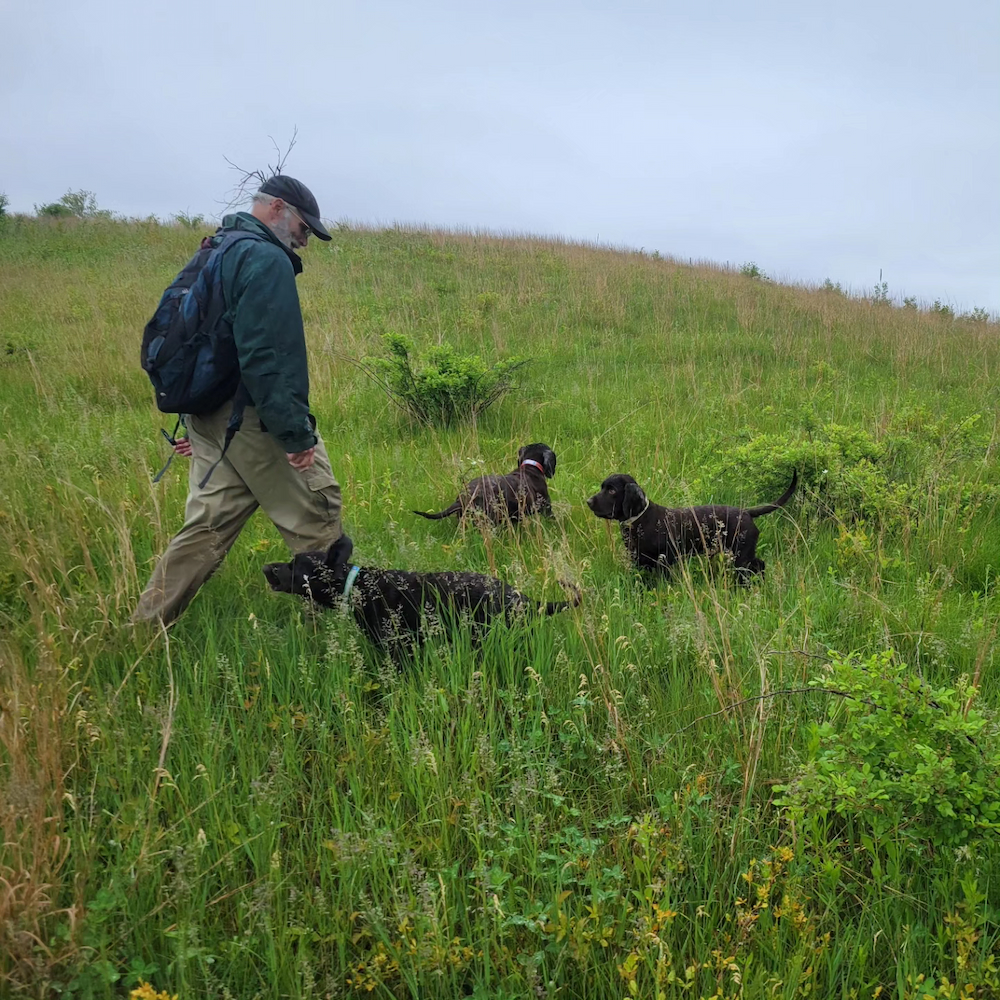Working dogs play an important role in many aspects of our society. The canine intelligence, trainability, and sense of smell is unmatched, which makes working dogs great assets to their human counterparts. In your daily life, you may see service dogs or police dogs, but have you ever heard of a turtle dog?
In the Wildlife Epidemiology Laboratory, we utilize working dogs to obtain samples for box turtle research. John Rucker is the owner of turtle dogs Scamp, Lazarus, Yogi, Ruger, Skeeter, and Penny. These dogs are Boykin Spaniels, which is the ideal breed for finding turtles due to their keen sense of smell and their soft mouths. They are extremely intelligent and are able to follow scent trails left by moving turtles. When a dog finds a turtle scent trail, the dog will start wagging its tail and its head will get lower to the ground. This is essential to achieve the magnitude of our work since they often find the turtles in places that would be challenging for humans to find simply with sight.
Since these dogs are working dogs, there are differences in how we interact with them compared to dogs that serve only as companion pets. From the moment we begin our hikes, the dogs know it is time to work. We make every effort not to distract the dogs while they are working, and they are very good at tuning out distractions. However, when they find a turtle, we shower them with well-deserved praise and pets. Additionally, while hiking, we trail behind the dogs to allow them the best opportunity to sniff out the turtles without contaminating the space with our human scent.
At the end of our hikes, the dogs have the opportunity to say hello to everyone, and they rest and relax with John until their next day of work. We have such a great appreciation for these dogs and all working dogs because they really push the limitations of human capabilities and contribute to science and medicine.

